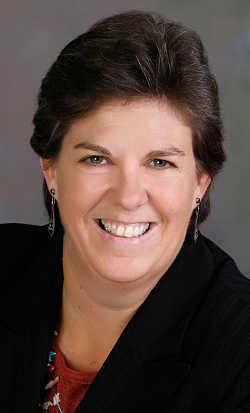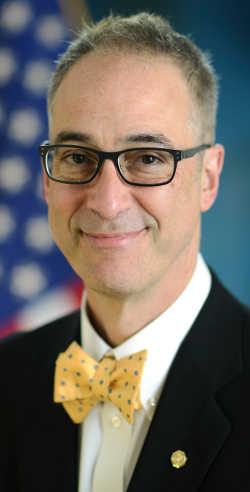- Will Tuttle
- Posted On
Tuttle: Let's protect our community!
This past Thursday evening at the Middletown Area Town Hall meeting, there was a standing-room only crowd of 75 people to discuss Dollar General's plan to erect one of their stores in Middletown.
Like myself, virtually everyone in attendance expressed concern about the devastating consequences of a Dollar General store invading our community.
We were supposed to only ask questions of the three experts – Mark Gilchrease, a representative of Dollar General; Rick Coel, head of Lake County’s Community Development Department; and Joe Dell, the developer who would be leasing the new building to Dollar General.
Their wish is to build a 9,100-square-foot box store on the open land by the stream on the north end of Middletown.
The meeting strongly reinforced my belief that a Dollar General store should not be allowed in Middletown. There are many reasons to oppose this incursion of heavy-handed corporate power and wealth into our sensitive community.
I highly recommend viewing the film documentary entitled “Walmart: The High Cost of Low Price.” It documents the devastating impacts that box-store chains have on local communities, and the same principles that apply to Walmart in larger communities apply to Dollar General, which targets smaller communities like Middletown.
At the meeting, Dollar General informed us of many things: that as a corporation, Dollar General is in the top 200 largest corporations in the U.S., with billions of dollars in sales and thousands of stores.
Its primary goal is increasing its profits and market share, and its representative declared to us on Thursday evening that it is under no obligation to comply with any of the wishes of our community in any way.
It will provide only about a 12 to 16 jobs, and most of them will be part-time, with absolutely no benefits and paying very little.
For this, we get a “store” that specializes in selling cheap foreign-made products that have been documented to be high in toxic plastics and chemicals and that end up soon in trash cans.
Recent studies indicate that 81 percent of products tested at dollar stores contain one or more hazardous chemicals above levels of concern.
Additionally, the presence of Dollar General in our community will put negative pressure on our local merchants, who will not be able to compete with this corporate behemoth that with its enormous buying power can force producers to supply products at cut-throat prices.
This inherently unfair advantage tends to force local businesses to close, and is part of a downward economic spiral that sucks money and resources out of communities and local economies and into the coffers of large financial institutions that are far away. This leads to further unemployment, poverty, stress, and economic and social breakdown.
What we see is a local version of what is happening nationally and internationally.
For the last several decades, U.S. corporations have been building factories in other countries with lower labor rates and more lax environmental, safety, and tax regulations.
Then they import these cheap products to be sold in box chain stores like Dollar General, while cutting US employment opportunities.
Now for Americans it’s more difficult to afford to buy quality products and many of us are reduced to shopping at the very corporate stores that have been devastating our economic landscape, leading to greater drug addiction, alcoholism, family violence and social disintegration.
Let's think globally and act locally! Here in Middletown, Cobb, Hidden Valley Lake and south Lake County, we have a beautiful natural environment and a wealth of talent, intelligence, and creativity.
We have been successfully creating our own local community with a unique character that celebrates and reflects who we are. This is our strength, and it is already attracting people and opportunity, and will continue to do that if we maintain our autonomy.
Traveling North American for 20 years in an RV, I've seen firsthand the devastating homogenization of our culture at the hands of the national chains that make every community look like every other.
The few thriving communities that have maintained their identity have done well, and have done so because they have been successful in keeping the big box chain stores out.
We are facing a serious threat in this Dollar General store that would like to exploit our community and suck dollars generally out of Lake County.
If we work together, we can emerge from this threat wiser, stronger, more united, and more healthy. But it requires us to organize and educate at a grass-roots level.
As is often the case in these things, our local government is not our friend. Rick Coel, who should be protecting our community's integrity and health, has shown that he is only too willing to side with the big bucks being waved around by Dollar General.
Dollar General has also showed us at last Thursday’s meeting that it is not completely honest. When asked if other communities have resisted their invasion, their representative at the meeting said, no, he wasn't aware of that happening. He lives in Grass Valley and is paid by Dollar General to oversee the infiltration of more Dollar General stores in our area.
He is obviously aware that in the town of Alta Sierra, near Grass Valley, the residents are being extremely vocal and organized in their opposition to an invading Dollar General store there.
The Union, the local newspaper, has a recent report with this lead: “Faced with a near-capacity crowd of angry residents, Nevada County officials delayed a decision Wednesday on a proposed Dollar General store in Alta Sierra until next month.”
Additionally, some of the residents of Nice, in northern Lake County, where a Dollar General store has recently been opened, are complaining bitterly about the garish and oversized signage that Dollar General has insisted on.
Do we want the same thing here? And what will it do to traffic flow? What effect will it have on our youth, who will be located, in their school, right across the street from this?
How will it affect our ecology, and the delicate riparian trout habitat of the stream on which the land borders? These chains are notoriously negligent of local culture and ecology.
People from the Bay Area are drawn to come over the hill to experience Middletown, Cobb, Harbin and the other springs and getaways we have here, and a big part of the draw here for them is the unique character of our beautiful and unique town. Why compromise or sacrifice our greatest asset for some toxic plastic trinkets?
At the meeting, it was refreshing to hear each others speak with passion about defending our cottage industries, and our local merchants, and our kids and our ecology. One man, who is just opening a taxi service, spoke of his passion to stop the clear-cutting of trees that is happening in our area. I am delighted that we are blessed to draw such noble hearts to our community.
What Dollar General represents is also a type of clear-cutting. It is not so obvious, though. It is an economic clear-cut, a clear-cutting of our culture. We must not allow it to happen!
Let’s follow the lead of Alta Sierra, and discuss and educate about this, and fill the upcoming Lake County Planning Commission meeting with outspoken residents who care about our quality of life here in southern Lake County.
Dr. Will Tuttle lives in Hidden Valley Lake, Calif.




 How to resolve AdBlock issue?
How to resolve AdBlock issue? 





